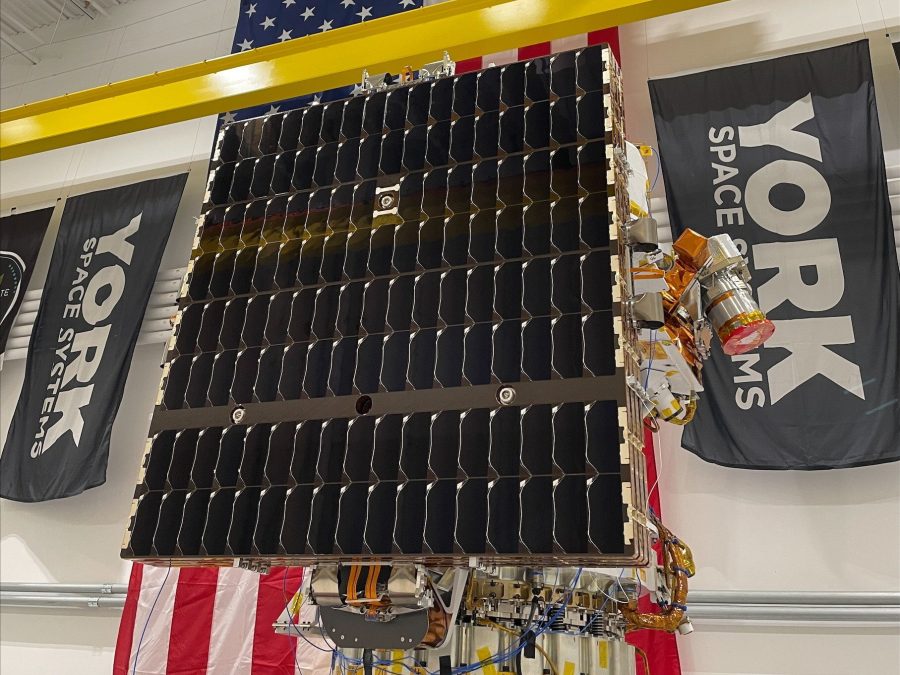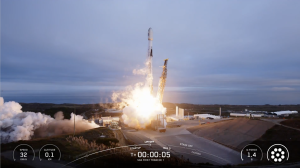Space Development Agency accelerates launch of first experimental tactical SATCOM satellite

The Space Development Agency has successfully launched its first satellite designed to demonstrate experimental tactical data delivery capabilities from low-Earth orbit (LEO) four months ahead of schedule, the organization announced Tuesday.
Dubbed “Dragoon,” the satellite was one of the multiple payloads launched from Vandenberg Space Force Base in California on Monday via a SpaceX Falcon 9 rocket as part of the company’s Transporter-14 smallsat rideshare mission, according to SDA. The spacecraft is the first of 12 prototype satellites developed by York Space Systems under SDA’s Tranche 1 Demonstration and Experimentation System (T1DES) program to go on orbit.
In 2022, York Space Systems received a $200 million other transaction agreement from SDA to develop and deliver 12 T1DES platforms that were slated for launch beginning in fiscal 2026. However, the company accelerated delivery of the first payload to prepare it for Monday’s mission “in response to an identified agency need,” York said in a statement.
“The Dragoon mission showcases exactly why our rapid mission delivery model matters,” Melanie Preisser, York’s general manager and executive vice president, said in a statement. “When SDA needed this capability sooner, we didn’t just accelerate, we delivered. That kind of responsiveness is what today’s defense posture demands.”
SDA did not provide many details about the specific demonstration that the recently deployed Dragoon satellite will conduct on orbit, but noted in a statement that the payload will enable “tactical data delivery to warfighter platforms to support capabilities like targeting, missile warning and tracking of advanced missile threats” and “support integration with tactical [SATCOM] system capabilities from low Earth orbit.”
Broadly, birds developed under the T1DES program will augment the Tranche 1 transport layer of the agency’s future mega-constellation known as the Proliferated Warfighter Space Architecture (PWSA) and inform requirements for future programs.
“T1DES will demonstrate mission payloads and configurations for potential proliferation through future tranches of the Proliferated Warfighter Space Architecture in an effort to lower latency of tactical data delivery and enhance beyond line-of-sight targeting capability,” SDA Director Derek Tournear said in a statement. “We’re very pleased to see this prototype space vehicle launch four months ahead of the original T1DES baseline schedule and before the first launch of Tranche 1’s operational space vehicles.”
The PWSA is a planned LEO constellation comprising hundreds of satellites carrying data relay, communications, missile warning and missile-tracking capabilities that will be launched in increments — known as tranches — every two years. The first operational batch of PWSA payloads known as Tranche 1 were expected to launch in September 2024, but supply chain bottlenecks and recent leadership instability have forced the agency to push the mission to late summer 2025.
The remaining 11 T1DES satellites are on track to launch sometime in fiscal 2026, SDA said in a statement. Once deployed, the constellation “will conduct demonstrations and experimentation of TACSATCOM, advanced waveforms, and Integrated Broadcast Service (IBS) capabilities, which are key for future connectivity of joint warfighters around the globe,” according to the agency.
SDA is also pursuing a second batch of experimental birds for Tranche 2 of the transport layer — an effort known as Tranche 2 Demonstration and Experimentation System (T2DES). The agency intends to leverage its new vendor pool established by the Hybrid Acquisition for Proliferated Low Earth Orbit (HALO) program to contract the effort.






